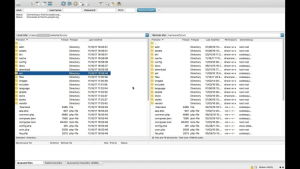GitFTP-Deploy 2.7.2 Windows + MacOS [Full] 2024

GitFTP-Deploy is a powerful deployment tool that works in tandem with Git, a popular version management system. It allows you to deploy changes from your local Git repository to remote servers via FTP, SFTP, or FTPS protocols. Whether you’re a solo developer or part of a team, GitFTP-Deploy has several tools that can help you streamline your deployment procedure.
The development process frequently entails rapid revisions to codebases. and these changes must be promptly pushed to remote servers. GitFTP for Windows is a robust tool that streamlines the deployment process. and enables perfect synchronization between local and remote repositories. In this post, we’ll look at the features and benefits of GitFTP, how to set it up, and how it may help you with your deployment process.
GitFTP-Deploy for Windows
Installation and setup
To begin using GitFTP-Deploy, you must first download and install the application on your Windows PC. After installing it, you may configure it to connect to your Git repository. GitFTP-Deploy works with common Git hosting services including GitHub. GitLab, and Bitbucket, allowing you to merge your current repositories smoothly.
Connecting to a Git repository
After installing GitFTP-Deploy, you may link it to your Git repository by giving the relevant login information. GitFTP-Deploy can now access your codebase and track changes for deployment. GitFTP provides precise and up-to-date deployments by connecting directly to your repository.
Configuring deployment settings
GitFTP-Deploy has an easy-to-use UI for configuring deployment parameters. You can enter FTP/SFTP details for the destination server, such as the hostname, port, username, and password. You may also provide the remote directory where the code will be deployed. These options allow you to tailor the deployment procedure to your individual needs.
Troubleshooting common issues
Despite its user-friendly UI, GitFTP may experience certain problems. Here are some examples of typical problems and their solutions:
Connection errors
If you have connection problems, double-check the server information. including the hostname, port, username, and password. Check that the server is accessible and that the credentials supplied are accurate.
Authentication problems
GitFTP-Deploy requires correct login credentials when connecting to a Git repository. If you have login issues, double-check that you entered the right username. and password, and that your account has adequate permissions to access the repository.
GitFTP-Deploy 2.7.2
GitFTP-Deploy’s current version has improved. user interface that is intended to improve user experience and make the deployment setting process easier. more intuitive. The user interface has been improved to create a clean and structured style that allows you to simply explore. and modify deployment parameters. The simplified UI allows you to concentrate. on your deployment activities without being distracted.
Look no further than GitFTP-Deploy 2.7.2 for a dependable and effective solution to optimize your deployment process. GitFTP-distribute’s newest version continues to provide developers with an easy. and convenient approach to distribute code changes to distant servers. Let’s look at the important features and improvements of GitFTP-Deploy 2.7.2 and how they might help your productivity.
GitFTP-Deploy Review
Are you fed up with manually deploying code updates to remote servers? Is the procedure time-consuming and error-prone for you? GitFTP-Deploy is meant to simplify and optimize your deployment procedure. In this study, we’ll look at GitFTP-Deploy’s primary features and benefits, as well as how it can transform your deployment process.
It’s simple to get started using GitFTP. The installation is simple, and you’ll have the application up and running on your Windows system in minutes. Once installed, GitFTP-Deploy may effortlessly connect to your Git repository. It connects smoothly with major Git hosting systems such as GitHub. GitLab, and Bitbucket, allow you to use your current repositories.
GitFTP makes it easy to connect to your Git repository. By inputting the necessary authentication information. you may create a secure connection between GitFTP-Deploy and your repository. This connection allows GitFTP-Deploy to easily track and deploy changes in your codebase. Say goodbye to laborious file transfers and hello to automation. Also Free Download: Incredible Bee Archiver
Screenshot:

Advanced features of GitFTP-Deploy
Excluding files and directories
In certain scenarios, you may need to exclude specific files or directories from the deployment process. GitFTP-Deploy allows you to define exclusion rules based on file extensions, patterns, or specific paths. This flexibility ensures that only relevant files are deployed, optimizing the deployment time and reducing unnecessary network traffic.
Branch-based deployments
GitFTP enables branch-based deployments, allowing you to specify different deployment configurations for each branch in your repository. This feature is particularly useful when working on feature branches or staging environments. You can define separate deployment targets or exclusion rules for specific branches, streamlining the deployment workflow for different stages of development.
Tagging and versioning releases
With GitFTP-Deploy, you can easily create tags to mark significant releases in your Git repository. Tags act as reference points, enabling you to deploy specific versions of your codebase. By associating tags with deployment configurations, you can ensure that each release is deployed to the appropriate server with the desired settings, providing a reliable and consistent deployment process.
Technical
- Title:
- GitFTP-Deploy 2.5.3 for Mac
- File size:
- 17.33 MB
- Requirements:
- Mac OS X
- Language:
- English
- Available languages:
- English,
- German,
- Spanish,
- French,
- Italian,
- Japanese,
- Polish,
- Chinese
- License:
- Trial version latest update:
- Tuesday, June 19th 2018
- Author:
- Eastwest
- SHA-1:
- 246e8db6801d2d13f8084f13478e58a01efc2db2
- Filename:
- GitFTP_Deploy_2.5.3.zip
Requirements
- You must have FTP access to your server. If your host allows or requires SSH please use my web-deploy action
- Some web hosts change the default port (21), check with your host for your port number
Conclusion
GitFTP-Deploy for Windows is a robust tool that helps developers with deployment. It simplifies the process of distributing code from your local repository. to distant servers because of its smooth connection with Git. automated deployment capabilities, and sophisticated features such as branch-based deployments and versioning. You may save time, and decrease mistakes. and improve cooperation in your development projects by utilizing GitFTP-Deploy.
FAQs
GitFTP-Deploy for Windows is it secure? GitFTP-Deploy supports protocols such as FTPS and SFTP to provide safe file transfers. Furthermore, it encrypts login credentials. and establishes secure connections, safeguarding your code throughout the deployment.
Can I deploy to numerous servers at the same time? Yes, GitFTP-Deploy enables you to configure and deploy. to several servers at the same time, making it easier to manage deployments across numerous environments or customers.
Does GitFTP-Deploy work with other Git clients? GitFTP-Deploy is intended to operate with any Git client. It connects with the underlying Git system. allowing you to use your favorite Git client while benefiting from the deployment features of GitFTP-Deploy.
Can I revert to a prior deployment? Yes, GitFTP-Deploy keeps track of your deployment history and allows you to simply roll back to earlier deployments if needed. This feature adds an extra degree of security and control to your deployment procedure.
Is GitFTP-Deploy compatible with continuous integration? While GitFTP-Deploy is primarily a deployment tool, it may also be linked to your continuous integration (CI) workflow. You may add GitFTP-Deploy into your CI pipeline for speed. and reliable code deployments by automating the deployment phase.


